The Art of Futuring

Abstract
This text is intended to provide a brief introduction to working with futures as artists and culture makers. One of the central concerns is how and why Futures can provide useful methods for increasing agency and encouraging co-creation of our collective futures. It is about why futuring is important for everyone, not just corporations and governments. It describes what we at FoAM understand by futuring, our interpretation of the (pre)history of Futures and a few suggestions about where it might be able to take us. It touches on the crossovers between art, design and futures and ends with a proposition for more widespread futures literacy.
The text is adapted from the lecture performance “Art of Futuring” presented by Maja Kuzmanovic at the opening of the Reshape Network in Lublin (Poland) and at KASK in Ghent (Belgium) as part of the research initiative “Futurology of Cooperation”.
Full text

Unknown, unknowable & uncertain.
Introducing and contextualising Futures for artists and culture makers, by Maja Kuzmanovic and Nik Gaffney
This article is intended to provide a brief introduction to working with futures as artists and culture makers. One of the central concerns is how and why Futures can provide useful methods for increasing agency and encouraging co-creation of our collective futures. It is about why futuring is important for everyone, not just corporations and governments. It describes what we at FoAM understand by futuring, our interpretation of the (pre)history of Futures and a few suggestions about where it might be able to take us. It touches on the crossovers between art, design and futures and ends with a proposition for more widespread futures literacy.
The text is adapted from the lecture performance “Art of Futuring” presented by Maja Kuzmanovic at the opening of the Reshape Network in Lublin (Poland) and at KASK in Ghent (Belgium) as part of the research initiative “Futurology of Cooperation”.
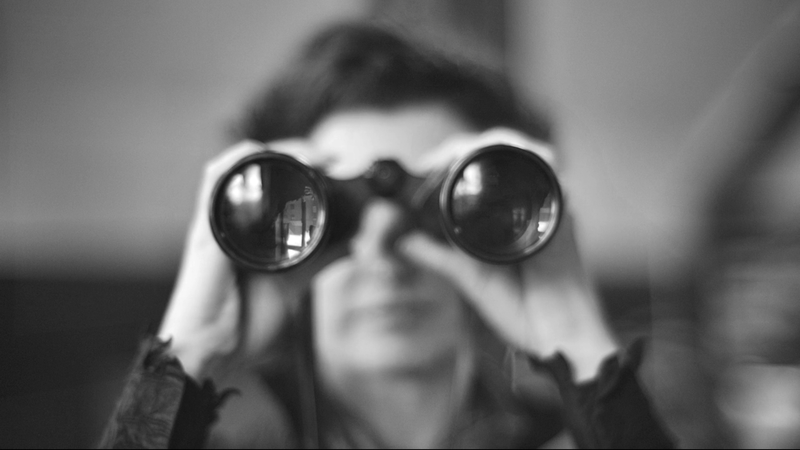
Collaborative futures
Discussing futures in the context of collaboration is timely and relevant to all of us working with culture, because our ability to collaborate within and across different fields will determine what kinds of futures we will live in and leave behind. Cooperation has always been important, and considering the complex global challenges we’re facing today, collaboration might become a matter of life and death. How will we work together to help with adaptation to- and mitigation of climate change? What joint action might refugees and their new neighbours engage in? How do you involve others in your own work, to fill the gaps in your own knowledge and experience? What happens when these others aren’t only humans, but plants, landscapes or machines?
Most of us are probably familiar with “collaborations” where conversation goes round-and-round in circles, usually fuelled by a dissatisfaction with the present. Collaborations where individuals never dare leaving the comfort zone of their narrow expertise and loudly resist approaching problems from different perspectives. Collaborations where fear of uncertainty stops us from being as creative as we could be. How do we transform such uncomfortable situations into creative challenges? One possible approach is working with futures as raw material for the creative process.
Interestingly, both futures and cooperation are phenomena that none of us can fully control. They cannot be comprehensively predicted and should not be taken for granted. They rarely conform to our ideals. They are messy, capricious and have the capacity to throw our life and work up in the air, often at most unexpected moments. Yet this is also why they are so interesting. They are filled with potential, with opportunities to learn and evolve, as individuals, as collectives, or societies.
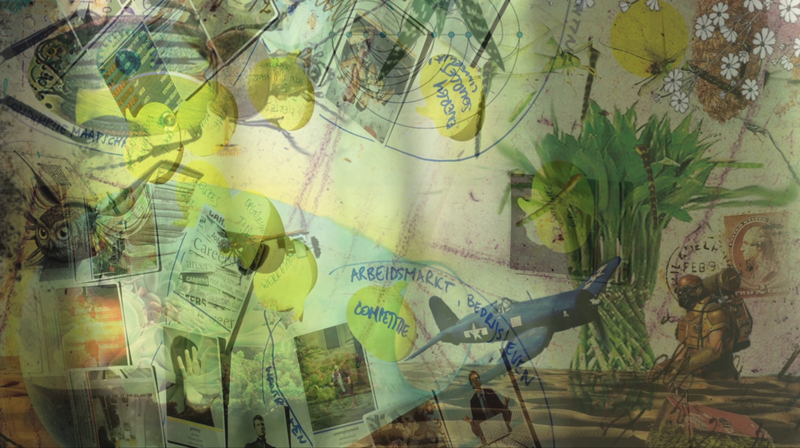
Why futures?
Futurists, critical designers or anticipation scholars do not claim a monopoly on working with futures. However, they have developed certain ways of thinking about the future and specific techniques to talk about and prototype potential futures. This can be helpful in situations in which we feel burdened by the past or stuck in the present. Yet, If you think that working with futures is about escaping the present, you will be disappointed. As meditators, futurists, philosophers and improvisers know well, the “now” is all we have to work with. Now is both a moment and an infinity. According to Deleuze, the now is an assemblage of what we’re ceasing to be and what we are about to become. The future already exists in the present, as potential. Futuring can therefore help you act in the present. It can help you become aware of the larger context in which your future unfolds and help you to understand what can and cannot be changed. Most importantly, being aware how your actions may influence the future can help increase your agency and responsibility in the present.
The complex uncertainties of our times make engaging with futures increasingly challenging. In such uncertain times, techniques from futures studies could help us make sense of the forces of change that are at play today, from human to planetary scales. At the core of futures practice is a positivist assumption that while the future may not be completely knowable, we can discuss it. We can try to understand what might happen and prepare for it to a certain degree. We might be able to influence or even shape some aspects of the future.
Being prepared for an uncertain future may at first appear paradoxical, yet this mindset is essential in facing contemporary global turbulences of climate change, global weirding, mass extinction, economic and social crises, which promise to destabilise our best laid plans. Rather than providing pre-packaged images of possible futures however, it is important to encourage do-it-yourself and do-it-together attitudes towards the creation and exploration of futures. Awareness of the multiplicity of futures and the possibility of influencing the course of one’s own life lays the foundation for a pervasive future preparedness.

Future preparedness calls for a familiarity with multiple scenarios and models of change, as well as an ability to navigate between them. In other words, while you might have your own preferred vision of the future, you can also develop the capacity to adapt to whatever the future may bring. One way of doing this is to have a tighter feedback between vision and adaptation. You shouldn’t keep your vision carefully packed away on the top shelf, take it out into the world, play with it, work with it, test it in a wide range of situations.
See the present as an experimental ground for the future. This requires the courage to scrutinise your projects to find out what assumptions you’re working from. Once you become aware of your underlying assumptions, treat them as a hypothesis, rather than unchangeable facts. What if you transformed some of your statements into questions? What if you could design experiments to answer these questions? How would you reflect on the relationships between your vision and the concrete situations you’re testing it in? Consider your vision as a proposition of a world that might be, but the conditions for it to emerge, just as you imagine it, may not exist yet. Instead of giving up, experiment with different aspects of your vision that are possible now. Work with constraints to refine your vision into something that can manifest today, no matter how small.
Speculating about what tomorrow might bring comes naturally to some, but requires practice for us all. Openness, observation, curiosity and ‘what-if’ thinking are just a few of the many mindsets that can help when working with futures. You don’t need to be a futurist to develop such mindsets, but if you are unsure where to begin, futures studies can provide some helpful stepping stones.
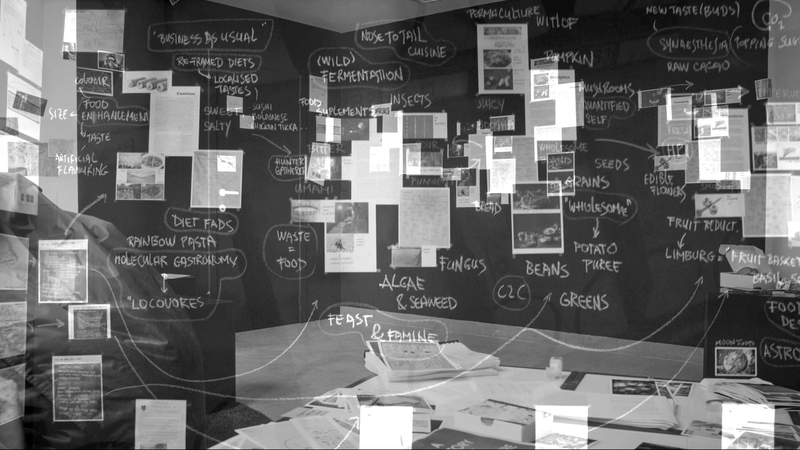
Futures Studies
Futures studies is a branch of the social sciences, parallel to history. We use the term futures rather than future. Plurality of futures is one of the underlying assumptions, without which Futures Studies wouldn’t exist. Futures studies assumes that there is not one but many potential futures and that some are more plausible than others. If we accept this premise as a given, it means that our actions in the past and the present will necessarily influence how the future unfolds. Being able to influence the future is an empowering thought, but it also assumes that we are, at least in part, responsible for this future.
Futures studies collects and analyses trends and signals existing in the past and the present, to create propositions of possible, probable or preferred futures. Trends are essentially drivers of change at a large scale, while weak signals are those easy to miss pointers of change beginning to emerge on the horizon. There are also things like wild cards and black swans, uncertainties which you can’t exactly study. Unexpected changes happen, and they can throw your whole understanding of the world upside down. Like a meteor strike, or Brexit.
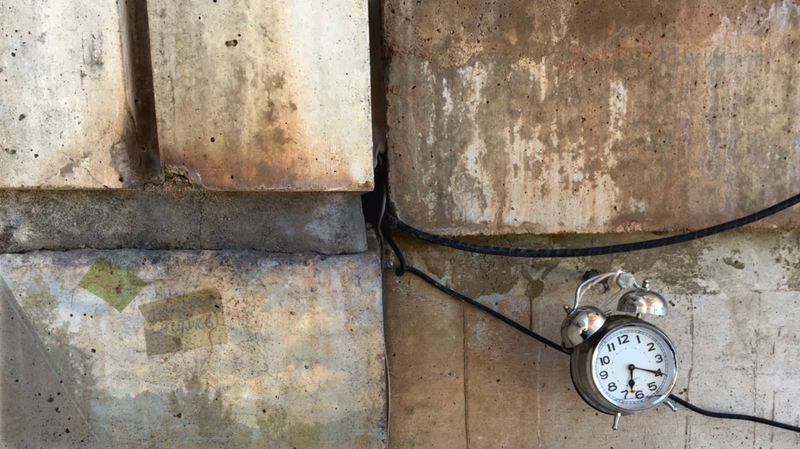
Futures is a study of change and possibility. It looks at what can be considered constant and what variables could influence how the future could develop. Some of these variables might be within our capacity to change, others are beyond our control. The futuring process can help discern what aspects of the future we might be able to influence, and which forces in and around us could support or hinder this influence. It looks at the underlying causes of particular trends and helps us understand where our engagement might have the most effect. Sometimes the change that needs to happen is in your personal life, or at the level of your organisation or your sector. But sometimes the change requires slower, longer term changes of social systems and cultural values.
Futures studies is inherently transdisciplinary. It relies on in-breadth knowledge of the world, rather than in-depth knowledge of one specific field. Futurists usually combine analytic and synthetic thinking. They are often what you’d call generalists. They work to uncover tendencies and assumptions in the way we might think about the future, to be able to make more appropriate decisions in the present.

How do we study the past and the present to suggest different futures? There are many and various methods, gleaned from a range of disciplines. Most techniques are designed to discern particular patterns of change in past or current events, to speculate how change might happen and which directions it might take. Futuring can be a complex activity involving many carefully researched facets, or it can be as simple as telling a story that begins with “What if…” The process can be designed for individuals but is often a collective exercise. With practice futurists develop a speculative mindset, which allows them to let go of the rigid steps of particular techniques, and be able to apply speculative thinking in different contexts. This mindset is characterised by an innate curiosity and encourages us to ask “what if” in any situation, no matter how difficult or complicated it might be. It is a mindset that is simultaneously imaginative and reflective.
History, emerging developments and presents of Futures
The unknowable quality of the future has been a challenge for millennia. To understand where current approaches to futures come from, it’s worth looking at the (pre)history of Futures. While the official history of Futures Studies starts around the 1950s, speculation about what the future may bring has been part of much older traditions.

There are many ways to understand what the history of Futures might be. What follows can be seen as FoAM’s idiosyncratic interpretation and extrapolation of “the five waves of futures” as described by Wendy Schultz. Even though the evolution of the field is presented here in chronological order, certain aspects of each historical stage are still relevant today.
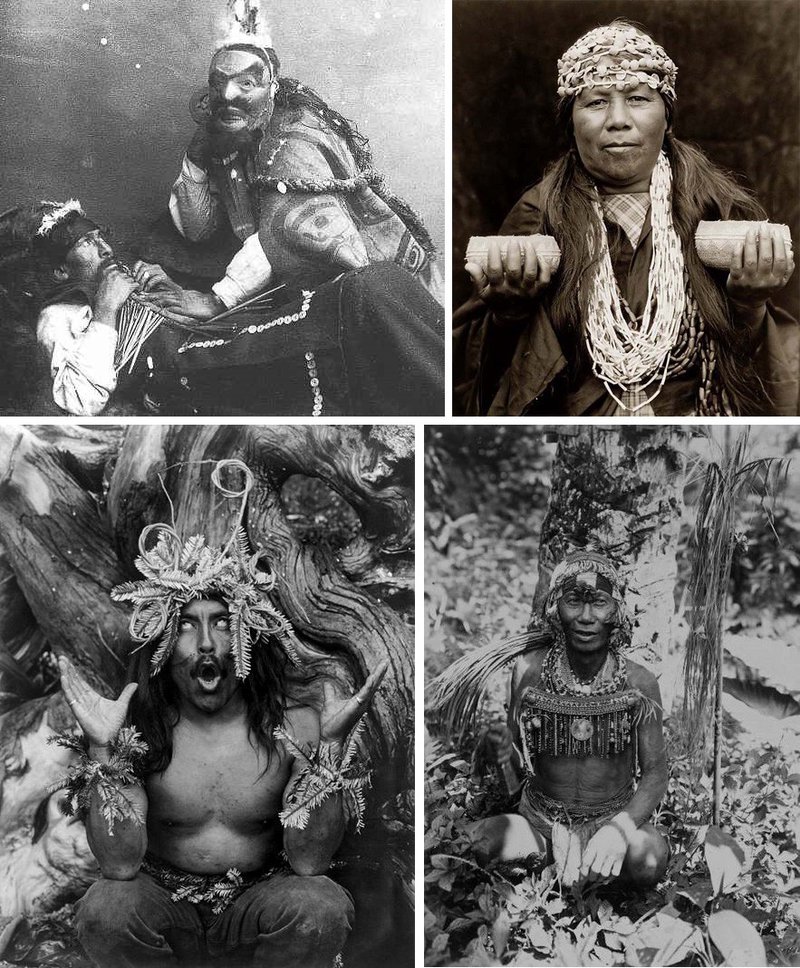
Since prehistoric times, in many cultures around the world, knowledge of the future has been the domain of oracles, shamans, priests and priestesses. They use techniques of divination and invocation to commune with the immaterial forces they believe are capable of telling what the future holds in store. Think of the Oracle of Delphi, of the Roman traditions of reading entrails, or the many shamanic rituals, in which the answers about the future come from entering altered states or talking with ancestors. In some traditions the future was fixed or “fated”. In others the future was synonymous with the fickle whims of the gods, changeable and malleable with particular rituals or offerings. There are some examples from occult traditions such as scrying, where glimpses from the future can become manifest in flames, crystal balls and coffee grounds. Some of the futuring described in oral traditions is still practiced today in indigenous cultures, by neo-pagans and even those of us who introduce elements of chance or synchronicity into the creative process.
With the rise of monotheistic religions and the centrality of writing, the future was subsumed into the will of a singular God. Faith in God and adherence to a set of written principles ensured an eternal preferred future known as Heaven. Deviation from the righteous path, could lead to a much less preferable, yet equally eternal future. This is of course a simplification, but it can help to illustrate the displacement of agency from a pantheistic or polytheistic understanding of the future as a partially knowable playground of gods and spirits, to a monotheistic religious determinism. This cultural shift may also underlie dualistic approaches to the future as either utopic or dystopic which is still prevalent in Western cultures.
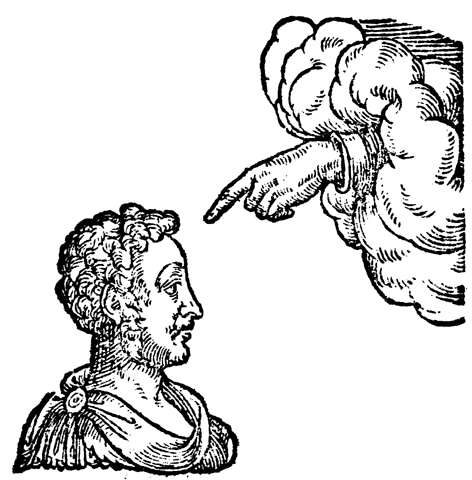
In the early middle ages, most of the interesting futures work happened outside Europe, in particular by Arabic and Chinese macrohistorians. In Europe these developments caught on a bit later, with people like Thomas More or Nostradamus.
Macrohistorians were looking for repetitions or cycles in the past, and extrapolating how these cycles might develop in the future. Arab historian Ibn Khaldun, for example, predicted that the future will continue following the patterns of nomadic conquest, consolidation, waste and decadence, and again conquest. Macrohistorians thought of the future as evolving over long term cycles, so in order to predict what might come to pass, a long and deep look into the past is needed. Once a pattern has been uncovered, you can extrapolate how a similar pattern will evolve in the future. An emphasis on long rhyming cycles can also be seen in the contemporary idea of Panarchy — a model of change found in ecological and social systems. According to this model, complex systems change cyclically, going through stages of renewal, exploitation, conservation and death, which leads to another renewal.
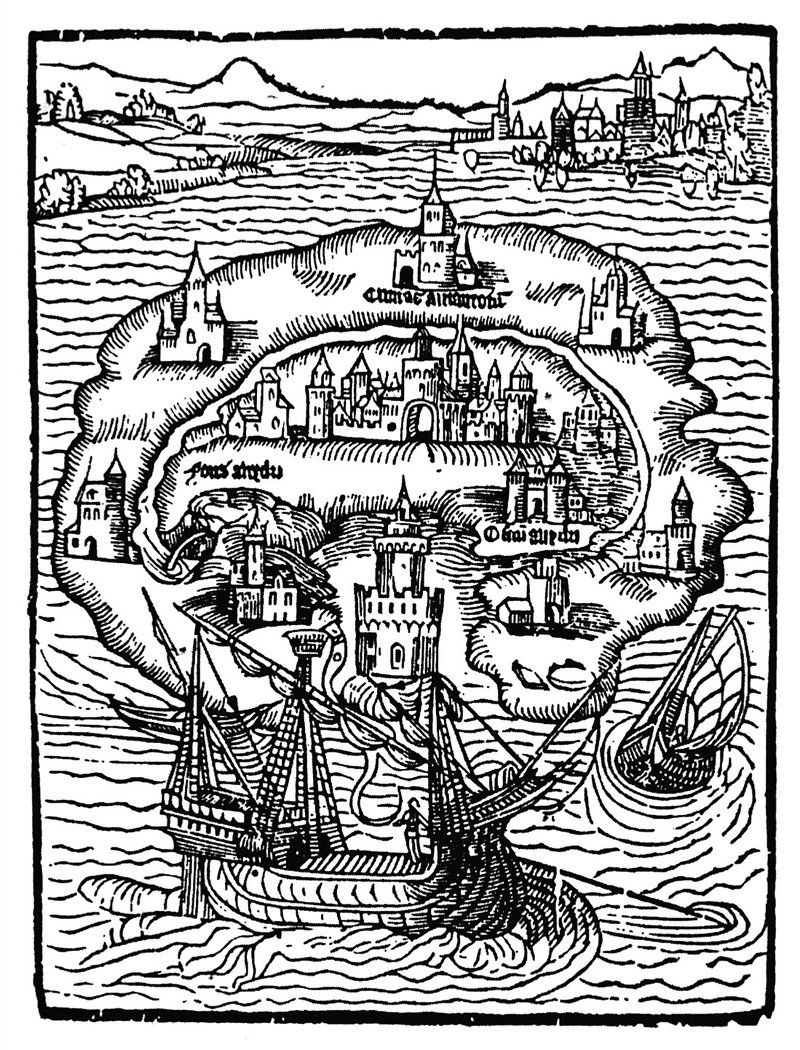
With the enlightenment and the industrial era came the image of a single future continuing onwards and upwards. The idea of linear progress was born and with it a rapid growth of extractive economies, fuelled by the expansion of mercantile and market capitalism. Science, technology and rational thought established dominance in thinking about the future. The future appeared to be understandable, controllable and explorable. Science fiction emerged as a popular genre, imagining fantastic voyages through time and space. Stories by Jules Verne, for example, or H.G. Wells. Technological development and mechanical utopianism went hand in hand with economic growth, the rise of labour movements and ambitious social experiments, including Colonisation, Marxism and the Soviet revolution. The artistic avant-garde developed future-oriented movements such as Futurism and Constructivism.
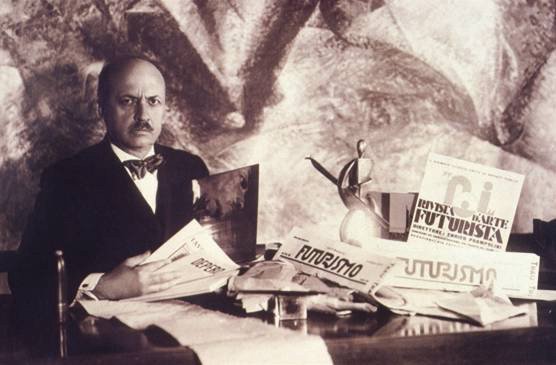
We currently live with the consequences of a narrow reading of enlightenment: progress as linear growth towards a man-made future. Yet a wider reading of the enlightenment era also encompasses its underbelly. Horror stories like Frankenstein, the works of Edgar Allan Poe and other gothic authors paint a very different picture of progress. Somewhere between the two extremes were the new forms of collaboration that emerged between artists, philosophers, scientists, technologists and social activists, invigorated by the possibility of radical change. New art forms like photography and film became possible with the development of new technologies. Artists and inventors, like Berlioz for example, sought to involve audiences in immersive, participatory experiences. They devised futuristic performances that combined new technologies to mesmerise audiences with the promise of the future, in larger-than-life panoramas, or operatic concerts performed by people and automata.
Then came the world wars. The destructive power of technology and linear thinking became painfully apparent. The sciences of relativity, psychiatry or quantum mechanics, for example, pointed to a reality of non-linear time and space. Progress was no longer as certain as many people assumed it was.
After WWII, Futures Studies began to be formalised as a legitimate field of research. It evolved side by side with systems theory and cybernetics. Much of this formal futures thinking came from the USA and Russia, the opposing powers of the Cold War. With the military-industrial complex fuelling the nuclear race, strategic foresight was called upon to calculate the probabilities of nuclear annihilation, among other things. Thinking about the future became institutionalised in think-tanks like the RAND corporation and international organisations such as the World Future Society.
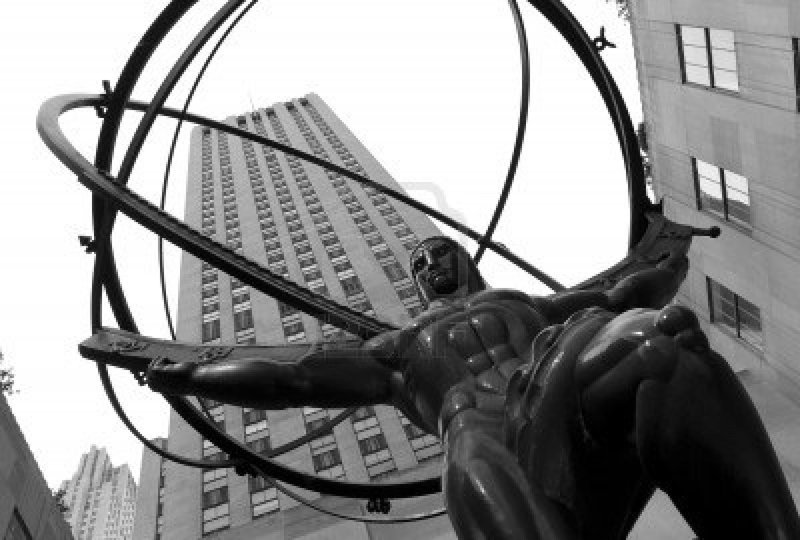
In the 1950s and 60s economic and technological optimism blossomed, and with it the ideas that a most probable path through the multiplicity of futures could be calculated and predicted, often using quantitative data analysis and mathematical models. This is around the time when the first contemporary techniques for futures and scenarios emerged, used by Shell and the Global Business Network for example. Futures studies and strategic foresight shunned their non-scientific ancestors and positioned themselves as instruments for ensuring economic growth and technological development, no matter what the future may hold. Marketing, design and strategic foresight joined forces to sell us a particular vision of the future where everything would continue just as it is, only better.
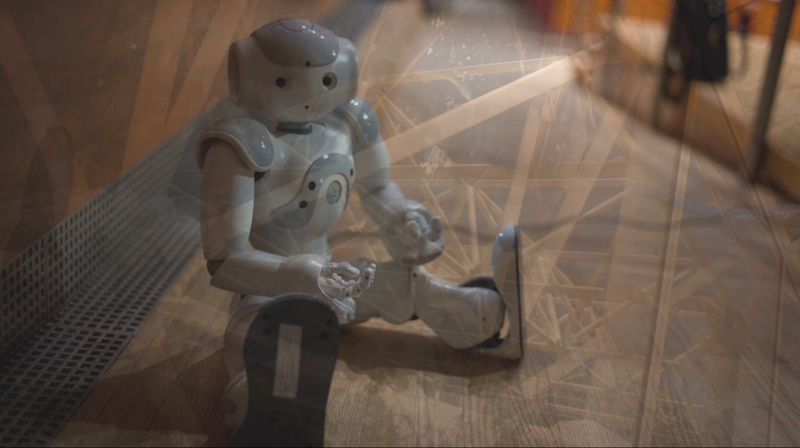
In1970s, cracks in this approach to futures began to appear. It was clear that the continuous growth of the 1950s was impossible to maintain. Ecological scientists and economists were pointing to the dangers of excessive consumption. The grand narratives of the 20th century were collapsing under the pressure of post-colonial realities. Borders were shifting, economies shrinking, and with them new themes were emerging in Futures studies. Environmental, social and political trends became just as important to address as economic and technological dynamism. Futures routinely included working with risk and disaster preparedness, and the focus began to shift away from the USA and towards more global participatory futures.
In the last thirty years, Futures has embraced new knowledge coming from various fields including complexity, chaos theory and cognitive science. Change was accepted as an inherent property of complex adaptive systems. It became a phenomenon to be studied and explored, rather than predicted. The uncertainty and unpredictability of futures became a given. With new developments in psychology and ethnography, Futures became more firmly grounded in the human condition. It began to focus on understanding the individual and collective roles we might play in the unfolding of possible, plausible and preferred futures. Integral Futures, for example, focuses on the importance of personal development in the process of Futures work, as much as on researching external influences.
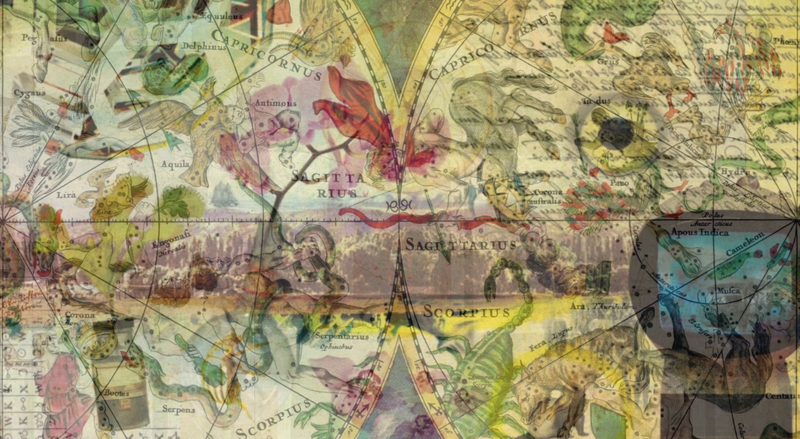
Critical and post-structuralist perspectives on futures enabled an exploration of change from radically different perspectives. Critical futures developed transdiscplinary methods to research causes underlying specific problems. In Causal Layered Analysis, for example, researchers look at how problems are reported in the media, then investigate systems, worldviews and cultures as causal factors. With such an in-depth understanding of the current situation and its layered causes, alternative images of the future are developed from the bottom up, starting with emotional or even mythical dimensions that could give rise to particular cultures.
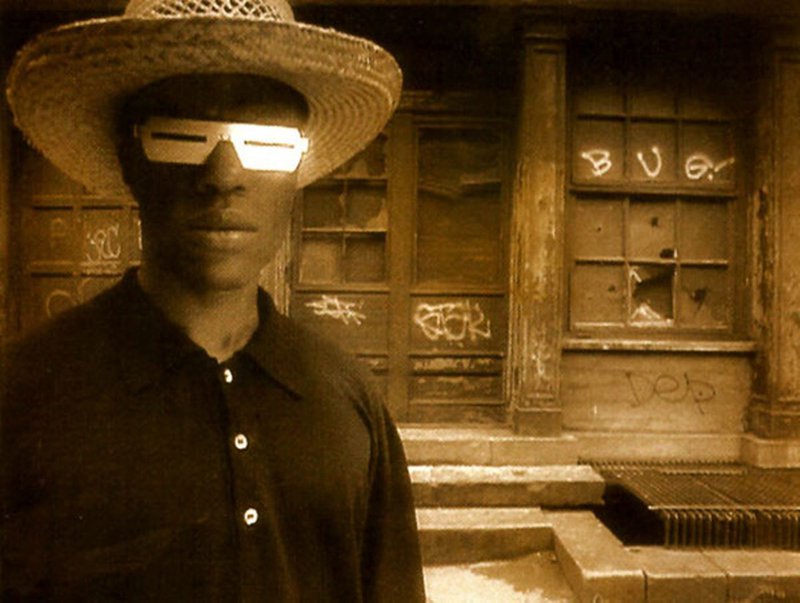
New, decolonial voices became prominent, in particular from Asia Pacific, Africa and South America. It is now becoming more important for Futures work to be inclusive and participatory. To be able to work with difference, while remaining aware of one’s own assumptions. Futurists began working more closely with community organisers in the hope of making conversations about the future more democratic. Futures workshops are frequently designed to encourage positive action across all sectors of society, from governments to grass-roots activists.
New technologies inevitably contributed to changes in the Futures field itself. Accessibility of global computing and increased capabilities for working with large amounts of data and offered new tools for examining the present to uncover emerging trends and weak signals. It also enabled a wider range of future visions to become accessible to anyone with an internet connection.
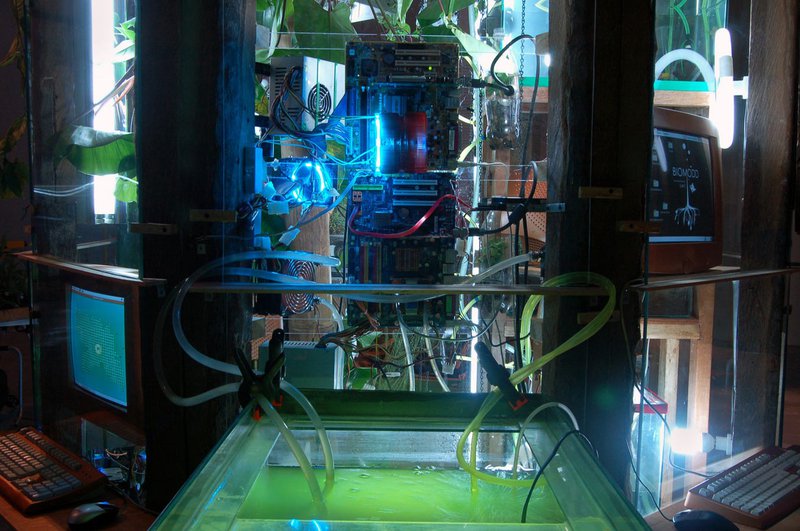
In the last ten to fifteen years working with futures has become everyone’s business. Being a futurist is now an established profession, either as academic study or consultancy offered to governments, businesses or organisations. There are graduate and post-graduate courses in Futures studies. Twitter is filled with tech-pundits calling themselves futurists. Working with futures has become a common approach across fields such as design, ethnography and policy. Futures is becoming an increasingly broad transdisciplinary activity, where theories and practices cross-pollinate in order to adress future-related issues across contexts and cultures.
You don’t need to call yourself a futurist in order for the future to be an important part of your work. Whether you live in a country driven by exponential growth (China or India, for example) or a place of collapsing ethics and infrastructure (UK, Russia or the USA for example) or a region riddled with conflict and drought (like the Middle East) not many of us trust others to tell us what the future will bring. We can no longer rely on the blueprints passed down by generations of priests, or dictators, or visionary scientists. We often have to make it up as we go along. Yet living from one day to the next is also not an option, with the looming threat of irreversible climate change and mass extinction breathing down our necks…
So how do we reconcile the urgency of having to meaningfully act in the present with the importance of taking long term consequences into account? In the last decade there have been increasing calls for more widespread futures literacy, something to help us approach the future more like a creative process, rather than the easy polarities of business-as-usual or an inevitable apocalypse.
It has become increasingly important to make the multiplicity of futures more visible, accessible and discussable. Once a multiplicity is articulated, we can investigate the plausible paths we might take to create our preferred future. We can design plausible roadmaps to understand how we might get from here to there, while being aware that the roadmap itself could disintegrate in the process. In other words, we have to learn how to live with contingencies. So it’s no surprise that there is an increasing demand to bring the future closer to the present and make it more widely accessible.
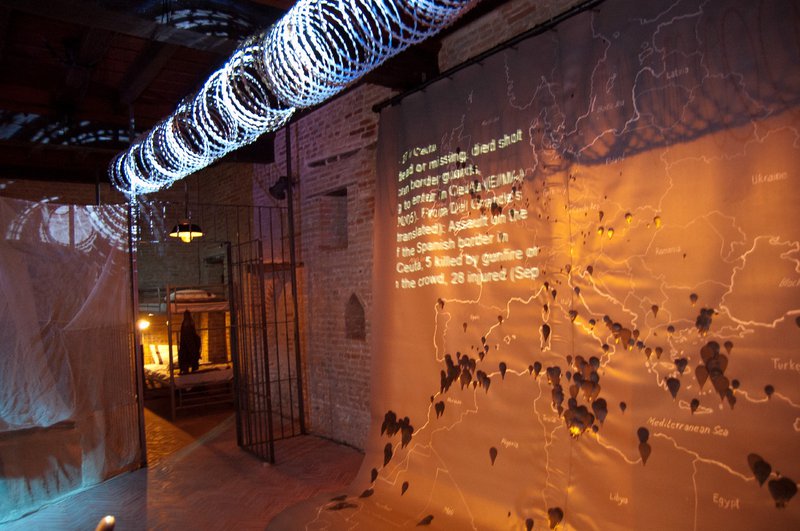
Futurists, researchers and activists use techniques like backcasting to translate visions of the future into concrete movements in the present. Philosophers, culture makers and spiritual guides point us toward ways of inhabiting uncertainty, to “stay with the trouble” without loosing sight of the long now. Arts and culture are of course involved as well. Speculative fiction has proliferated into new genres including infrastructure fiction, cli-fi, afrofuturism, eco fiction and geomythology. Visualising and prototyping possible futures is central to Speculative and Critical Design. There has been a proliferation of design agencies and arts collectives working with everyday and near futures scenarios, using guerilla tactics to embed images and objects of the future in the streets and public spaces. Game designers, performance and installation artists have created immersive, interactive worlds that make images of the future tangible and experiential.
There is a proliferation of approaches to how futures are studied and practiced today. There are various methods and simple techniques that can be applied in different situations. None of them will provide a single solution to all of your problems of the future, but all of them can help with the feeling of being stuck in the present or overwhelmed by the possibilities and impossibilities of the future.

Experiential futures and the arts
One aspect of current futures developments is of particular interest to the arts in general and performing arts in particular. That is experiential futures. Experiential futures aims to bring the worlds of tomorrow into the present, in a way that can be experienced directly. In the absence of functional time-travel, such attempts rely on more mundane techniques borrowed from theatre, design or psychology. Experiential futurists create speculative artifacts, installations, pre-enactments, games or tactical interventions in public spaces.
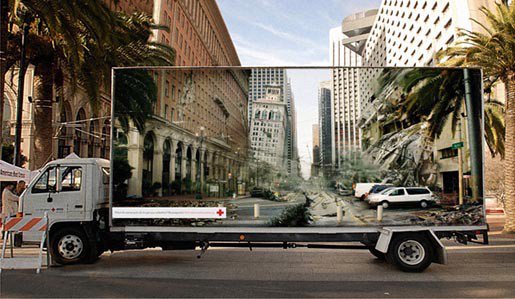
These works take futures studies outside the familiarity of words and foresight reports. Hearing or reading something doesn’t penetrate as deeply as the understanding gained through experience. To truly know the world we need to engage with it through situated interaction, using our minds and bodies, with their intricate systems of embodied and enactive cognition. An understanding of futures may require more than words, no matter how well researched and well crafted they may be. Therefore experiential futures have the potential, or perhaps even a responsibility to (re)connect rational analysis, abstract speculation and embodied knowing.

In experiential futures, we combine conventional Futures techniques with the creative processes used in arts and design to make aspects of the future possible to experience today, as artistic experiments or design prototypes. To get to the images of the future we can draw upon the myriad of techniques from Futures studies. We usually begin by articulating a specific question. We map the past and the present context that gave rise to this question, and look for signals and trends pointing to changes in this context. From there we challenge our own preconception of the default future (images of the future we take for granted) and extrapolate different futures scenarios.

There are many scenario methods out there. One of the better known (and simple to explain) methods uses four “Archetypal Futures” designed by Jim Dator at the University of Hawaii. The idea behind this method is that almost all of our images of the future tend to fall into one of four archetypal categories: Continue, Collapse, Discipline and Transform. To design a Continue scenario, we ask “What are the ways in which the current situation could continue as it is?” Say that the economy can continue to grow. Collapse explores the question “what are the ways in which the world as we know it could fall apart?” We are already seeing what happens when the growth economy reaches its limits and leads to economic and political crises. Collapse looks at what would happen when this scenario is taken to its extremes. In Discipline we look at different ways in which the situation could be directed by imposed rules or enforced self-discipline. Say if we know that growth economy can’t continue, how could we curb it through regulation towards a steady-state economy? Finally, the Transform scenario asks “What are the ways in which our situation could change altogether?” What would be a radically different type of economy that would, for example, be inclusive, based on principles of abundance and generosity for all including all beings on the planet and beyond?
These are of course extremes, or caricatures of possible futures. However, it helps to exaggerate in this stage, in order to illustrate that radically different answers can be given to the question you started with. This scenario method works well to test your understanding of a situation you’re faced with and to challenge the boundaries of your own expectations, without falling into the simple dichotomy of utopia and dystopia. Plausible futures usually happen somewhere in between, by incorporating elements of all scenarios. To map out the plausibility of the scenarios, the scenario method called the Futures Cone can be useful. The Cone fans out the further away from the present, making it possible to visualise the spectrum between the plausible and improbable aspects of a scenario.
Scenarios and the data that informed them can be packaged into serious foresight reports, with recommendations for concrete decisions and actions. Sometimes, scenarios are tested using, for example, computer modelling or expert evaluation methods. While this information is valuable for experts and analysts, it is not particularly accessible outside of the circle of people who are directly involved. Experiential futures, on the other hand, takes the scenarios as starting points for a range of tangible futures prototypes. These prototypes are often opened up to wider audiences and can be designed in different forms, ranging from staged photographs to fully immersive performances.

Speculative design and Design Fiction, for example, portray stories or artifacts of the future as if they have already happened. They borrow from popular media formats, like docufiction or advertising, to make the audience feel as if they were inhabiting a particular scenario. They often zoom in to concrete situations that could happen in daily life. Superflux, The Extrapolation Factory and the Near Future Laboratory have several good examples online.

There are experiential futures formats that are more immersive, like interactive installations, responsive environments, transmedia storytelling or physical narratives. The Situation Lab, Superflux, Changeist, Structure & Narrative, Time’s Up and FoAM use such experiential formats to engage audiences in discussing futures. Imagine entering into a room that is designed “as if” a future scenario were real. Every detail in this room forms part of a story. Scenography is used to convey the story of the future in objects and media. The audience is invited to explore, perhaps as if they were in a friend’s house, who stepped out for a while. The visitors can look around, perhaps rummaging through shelves or cupboards, maybe read through letters or emails, perhaps even uncover a scandalous secret. Like detectives tasked to find out exactly what has happened in this particular future, the participants can get to know something about the people and their lives just by looking through their “stuff”. Say, what would someone’s home look like if they had to grow all their food indoors, or had to purify their air because the atmosphere outside is too toxic.
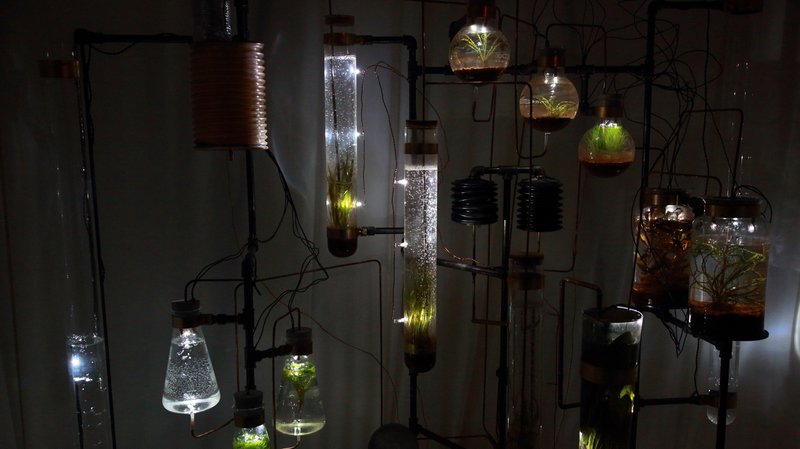
To make such experiences believable, the broad strokes of a scenario need to be filled with the mundane details of daily life, this can include things like food, clothing, tools, work-spaces, interfaces, events, rituals, etc. Elaborating an experience in such detail can help point out inconsistencies between the ideas in the scenario and the gritty reality, between the images of the future and their embodied manifestations. When we invite audiences to enter into such an immersive situation, they can experience the scenarios up-close-and-personal.

What if an audience is expected to engage with the future scenario as if they were themselves part of this future? This is where experiential futures borrows from Live Action Role Playing, or larping. Combining elements from theatre and gaming, larping has a range of definitions. One of the more concise is “collaborative pretending with rules”. In the context of futures, the scenarios become the backstory of the game world, from which situations and the physical space in which the Larp happens are designed. The players take on the role of characters in this world and perform or explore in line with the story and the rules of the game. The rules are important since they provide the boundaries of the game, and allow everyone to act as if they’re part of the same world. They can work as creative constraints within which future scenarios can be played out, tested and challenged.
At FoAM we developed a version of larping that we call prehearsals or pre-enactments. They are similar to Larps, but rather than playing a character, you are invited to play yourself in a particular scenario. Participants can explore what their life might be like in a specific, plausible near future. During a pre-enactment, the scenario is always a first-person experience. By combining elements of larping, improv, meditation and self-reflection, it can help you to imagine who you might become and how you might behave in a possible future. In different scenarios different aspects of your personality come to the fore. So by enacting yourself in a range of situations, you can find out how you might react to changing conditions. You enter into a pre-enactment as yourself and improvise specific everyday situations. You can notice what thoughts, emotions and behaviours underly your habitual reactions. You might get to know yourself a bit better, from the vantage points of different futures.
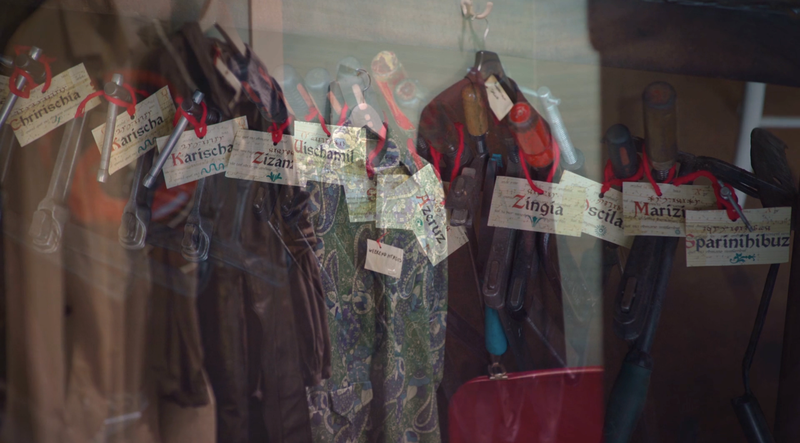
Improvisation relies on spontaneity and synchronicity to resolve uncertainty on the spot. Keith Johnstone warns that we “mustn’t try to control the future” during improvisation. We mustn’t try it in real life either. It’s a recipe for failure. Instead, he says, we should rely on our skills of observation and interaction. Improvisation provides insights into our intuitive and habitual responses to particular situations. It also allows us to experience the thrill of being able to shape a situation through collaboration with others. One of the key elements of successful improvisation is that the participants can trust and build on each others actions. The experience of uncertain futures can become less threatening when approached from such an amicable, proactive perspective.
Any images of the future that arise from improvised experiments are necessarily influenced by the participants’ beliefs and knowledge rather than being primarily based on data originating from detailed research. What these images may lack in accuracy or objectivity, they gain by providing subjective insight into the expectations and behaviours of the people involved. However, if we want to draw any meaningful conclusions, the experience needs to be analysed afterwards. Here we can draw from ethnography and psychology to translate experiential insights into concrete signals and actions that can be implemented in real life.

Towards a widespread futures literacy
The experiential approaches to futures have the potential to speak to a wide range of people. They can provide ways to extend the experience of the present moment to include larger temporal scales in the Long Now. They can contribute to the development of ambient foresight where thinking and experimenting with futures becomes a part of the habits of daily life.
The translation between futuring experiments and real life is the crux of any futures practice. Futurists are keenly aware of the “Cassandra problem”, in which predictions of future outcomes, no matter how accurate, are difficult to persuade others to act on it. We all know about global warming, for example. We know that if we don’t make substantial changes on individual and global scales, it is unsure if the Earth will remain hospitable to humans. We have all the facts and many of the tools to transform the unsustainable present, yet it remains uncertain if we will manage to make necessary changes in time.
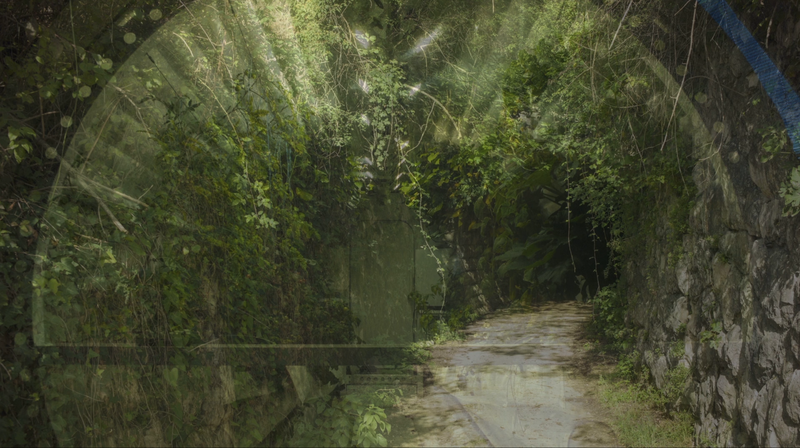
Working with futures might show you some possible paths to take, but you will have to walk the path yourself.
If we want our work with futures to make a real difference in the lives of the people involved, it should be transformed from a noun to a verb. From futures to futuring. As a verb futuring encapsulates the committed, active attitude that is essential when engaging with the unknown. Until strategic foresight is transformed into ambient foresight. Until an everyday future consciously emerges from small changes in our daily life. Until the vast potential of futures is brought within everyone’s reach, and the future appears as pliant as it really is…

With thanks to Diederik Peeters and Anna Czapski, KASK, Kunstenpunt and The Reshape Network.


